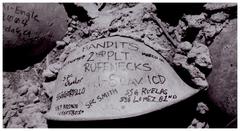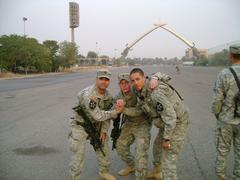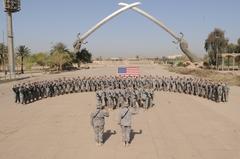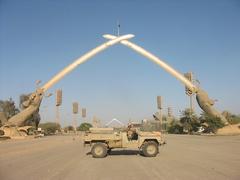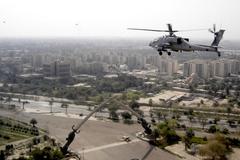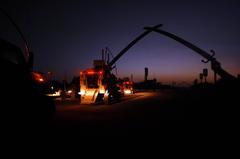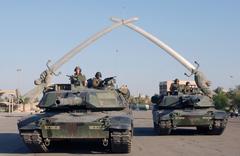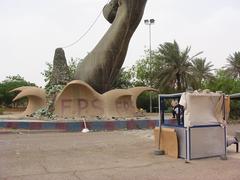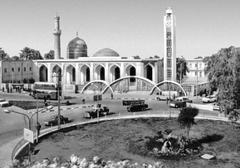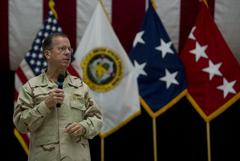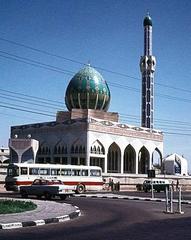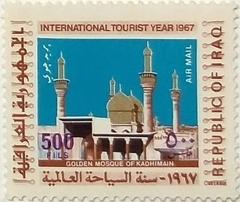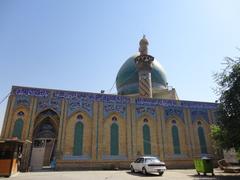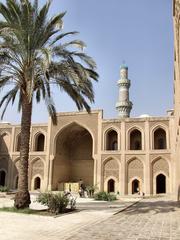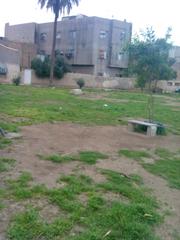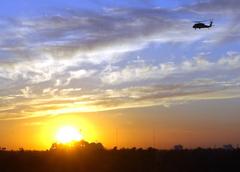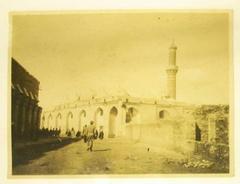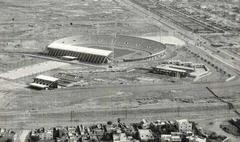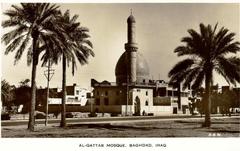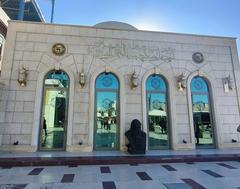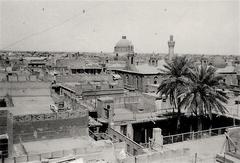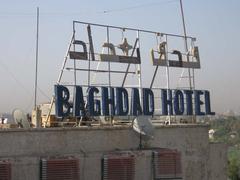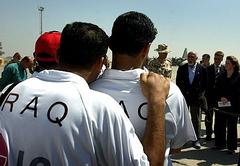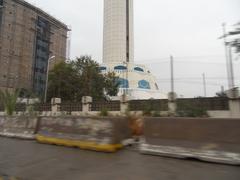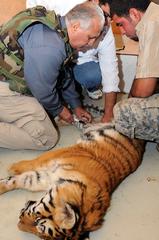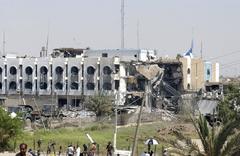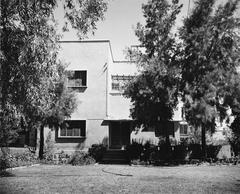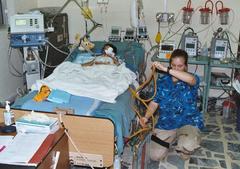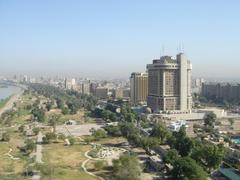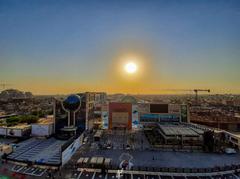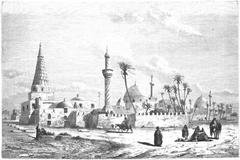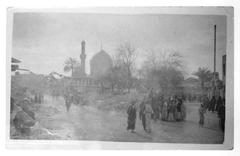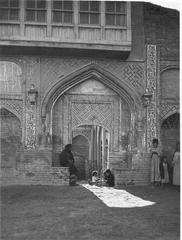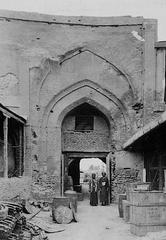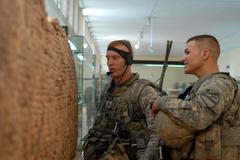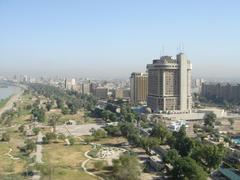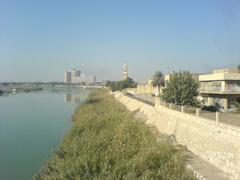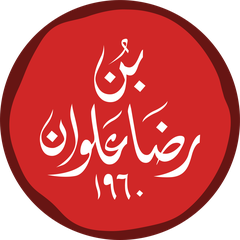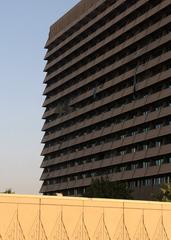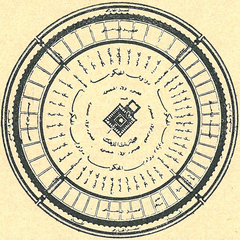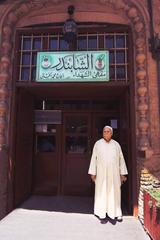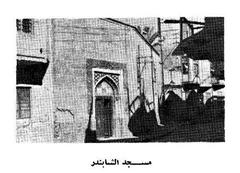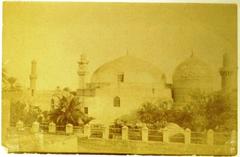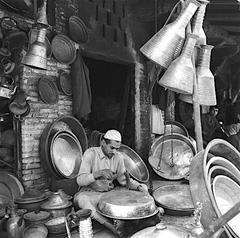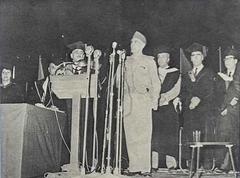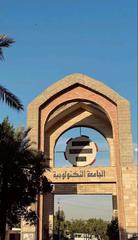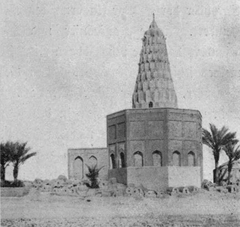
Visiting Al-Shaheed Monument in Baghdad
Date: 23/07/2024
Introduction
The سيوف القادسية (Swords of Qādisiyyah), also known as the Victory Arch, is one of Baghdad’s most iconic landmarks. Commissioned by Saddam Hussein, this monumental structure commemorates the Iran-Iraq War and stands as a testament to Iraq’s rich history and resilience. Designed by Iraqi sculptor Adil Kamil and constructed between 1986 and 1989, the Victory Arch features two enormous hands, each holding a sword, which meet in the middle to form an arch. The hands are modeled after Saddam Hussein’s own hands, and the swords, measuring 43 meters in length, symbolize the strength and victory of the Iraqi forces (Britannica) (Al Jazeera). The name ‘Swords of Qādisiyyah’ refers to the Battle of al-Qādisiyyah in 636 AD, during the Muslim conquest of Persia, drawing a parallel between this ancient victory and the contemporary conflict with Iran. This monumental structure is not only a reminder of Iraq’s military prowess and resilience but also a controversial symbol in the post-Saddam era, preserved by the Iraqi government as a historical site (The Guardian) (NY Times).
Table of Contents
- Introduction
- History of سيوف القادسية, Baghdad, Iraq
- Visitor Information
- Cultural Impact
- Modern-Day Relevance
- Visitor Experience
- FAQ
- Conclusion
History of سيوف القادسية, Baghdad, Iraq
Origins and Construction
The سيوف القادسية (Swords of Qādisiyyah) was commissioned by Saddam Hussein to commemorate the Iran-Iraq War, which lasted from 1980 to 1988. Designed by Iraqi sculptor Adil Kamil and constructed between 1986 and 1989, the structure consists of two enormous hands, each holding a sword, which meet in the middle to form an arch. The hands are modeled after Saddam Hussein’s own hands, and the swords are 43 meters long, symbolizing the strength and victory of the Iraqi forces (Britannica).
Symbolism and Significance
The Swords of Qādisiyyah are laden with symbolism. The name refers to the Battle of al-Qādisiyyah, a decisive battle in 636 AD during the Muslim conquest of Persia. Saddam Hussein aimed to draw a parallel between this ancient victory and the contemporary conflict with Iran. The monument serves as a reminder of Iraq’s military prowess and resilience, with the hands representing the strength and unity of the Iraqi people and the crossed swords symbolizing victory (Al Jazeera).
Construction Details
The construction of the Swords of Qādisiyyah was a massive engineering feat. Made of bronze and stainless steel, the structure weighs approximately 140 tons. The swords were manufactured in the United Kingdom and shipped to Iraq for assembly. The base of each hand is adorned with 5,000 helmets of Iranian soldiers, collected from the battlefield, emphasizing the monument’s warlike theme (The Guardian).
Historical Context
The Iran-Iraq War, one of the longest and most devastating conflicts of the 20th century, resulted in approximately 1 million casualties. The war began in September 1980 when Iraq invaded Iran and lasted until August 1988. The Swords of Qādisiyyah were erected during the final years of the war to bolster national morale and project an image of strength and victory (History).
Post-Saddam Era
Following Saddam Hussein’s fall in 2003, the Swords of Qādisiyyah became a contentious symbol. Some viewed it as a relic of a brutal dictatorship, while others saw it as an important part of Iraq’s history. In 2007, the Iraqi government decided to preserve the monument as a historical site, recognizing its significance in the nation’s collective memory (NY Times).
Preservation Efforts
In recent years, efforts have been made to preserve and restore the Swords of Qādisiyyah. The monument had suffered damage due to neglect and vandalism. In 2011, the Iraqi Ministry of Culture launched a restoration project to repair the structure and clean the bronze and stainless steel surfaces. These efforts aim to ensure that the Swords of Qādisiyyah remain a prominent and well-maintained landmark in Baghdad (Reuters).
Visitor Information
Tickets and Visiting Hours
The Swords of Qādisiyyah are open to the public, and there is no entrance fee. The monument is accessible 24/7, but it is recommended to visit during daylight hours for the best experience.
Nearby Attractions
The monument is located near the Green Zone, making it easily accessible to tourists. Nearby attractions include the Baghdad Museum, Al-Shaheed Monument, and the Al-Kadhimiya Mosque, offering a comprehensive glimpse into Iraq’s rich cultural heritage.
Guided Tours
Guided tours are available and provide in-depth information about the monument’s history and significance. These tours can be booked through local tour operators or at tourist information centers in Baghdad.
Cultural Impact
The Swords of Qādisiyyah have had a lasting impact on Iraqi culture and identity. The monument is often featured in literature, films, and other forms of media as a symbol of Iraq’s turbulent history. It has also become a popular tourist attraction, drawing visitors from around the world who are interested in the country’s history and architecture (Lonely Planet).
Modern-Day Relevance
Today, the Swords of Qādisiyyah stand as a testament to Iraq’s complex history. The monument serves as a reminder of the Iran-Iraq War and its impact on the country and its people. It also highlights the challenges of preserving historical sites in a country that has experienced significant political and social upheaval (BBC).
Visitor Experience
For visitors to Baghdad, the Swords of Qādisiyyah offer a unique and thought-provoking experience. Visitors can walk beneath the arch and view the intricate details of the bronze hands and swords. The surrounding area also features other historical landmarks. Guided tours offer detailed insights, enhancing the visitor experience (TripAdvisor).
FAQ
Q: What are the Swords of Qādisiyyah visiting hours?
A: The monument is accessible 24/7, but it is recommended to visit during daylight hours.
Q: Is there an entrance fee for the Swords of Qādisiyyah?
A: No, there is no entrance fee.
Q: Are guided tours available?
A: Yes, guided tours are available and can be booked through local tour operators or tourist information centers.
Q: What are some nearby historical sites?
A: Nearby attractions include the Baghdad Museum, Al-Shaheed Monument, and Al-Kadhimiya Mosque.
Conclusion
The سيوف القادسية (Swords of Qādisiyyah) is more than just a monument; it is a symbol of Iraq’s history, resilience, and identity. Despite its controversial origins, this towering structure continues to captivate and inspire visitors from around the world. Preserved as a historical site, it stands as a reminder of the Iran-Iraq War and its impact on the country and its people. The monument also highlights the challenges of preserving historical sites in a country that has experienced significant political and social upheaval (BBC). For visitors to Baghdad, the Swords of Qādisiyyah offer a unique and thought-provoking experience, with guided tours providing detailed insights that enhance the visitor experience (TripAdvisor). As Iraq moves forward, the monument stands as a reminder of the past and a beacon of hope for the future.
References
- Victory Arch, Encyclopaedia Britannica source
- Iraq’s Victory Arch: A symbol of Saddam Hussein’s legacy, Al Jazeera source
- Iraq: The arts and the war, The Guardian source
- Iraq to preserve Saddam-era Victory Arch, NY Times source
- Iraq’s Victory Arch: A symbol of Saddam Hussein’s legacy, BBC source
- Victory Arch, TripAdvisor source
